Contents
There is such a category of drinks in the alcoholic world as orange liqueurs. It is quite extensive and includes many names and brands. Triple sec, Grand Marnier, Cointreau are household names and well-known to many, but they are far from recognizable and the excitement that periodically arises around the Blue Curacao liqueur. So, who do you thank for creating the mysterious blue liquor? Actually, why is it blue? How to cook it at home? How to drink Blue Curacao in its pure form and in cocktails? Let’s figure it out!
Blue Curacao (Blue Curaçao) is a bright blue liqueur, which is obtained by infusing wine spirit (or alcohol from other raw materials) on the dried peel of bitter oranges of the “Laraja” variety and further distilling this infusion. The strength of the liquor varies from 15 to 40%. The key ingredient in the entire category of Curacao liqueurs is the rind (or fragrant oil) of the Larach bitter orange (Citrus × aurantium subsp. currassuviencis) from the island of Curacao, located in the Caribbean near Venezuela (Kingdom of the Netherlands). This is a variety of the well-known Seville orange (orange, bitter orange, sour orange, bigaradiya), which was brought to the island by the Spaniards in 1527. On the island, the orange did not take root and degraded, as a result of which its fruits became so bitter that they were no longer eaten. However, the essential oils contained in the peel of Laraja oranges are the best fit for creating amazing liqueurs.
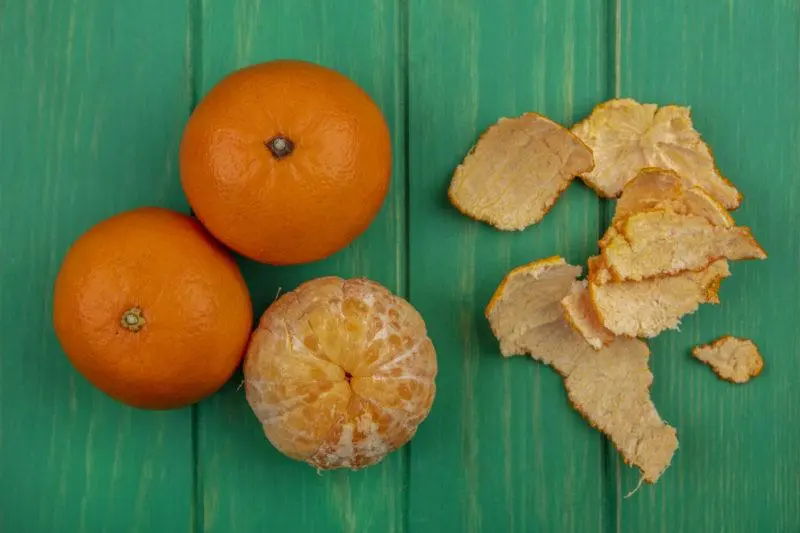
Dried Orange Peel Laraja for Blue Curaçao
History and production of Blue Curacao
Who and when developed the recipe for Curacao liqueur is not known for certain. According to one version, which for obvious reasons is promoted by the famous liqueur manufacturer Lucas Bols, the drink from Laraja oranges was invented by the founder of the company, Lucas Bols (1652-1719). Convincing facts speak in favor of the legend. The Dutch West India Company took possession of Curaçao in 1634. The Bols were shareholders in both Dutch colonial companies, and therefore won contracts for the supply of spices from East to West, including Curaçao, without any problems. When it turned out that fragrant oil could be obtained from the dried peel of green oranges, which were previously useless, Lukas Bols began to carry this oil on his way back to Amsterdam. So, allegedly, Mr. Balls received the raw materials for the development of the Curaçao recipe. Later, around the 1920s, for marketing purposes, the heirs of Bols began to tint the clear liquor blue, creating a mystical “element of alchemical mystery” around it.
Previously, Curacao, colored blue, was called Crème de Ciel (“heavenly cream”).
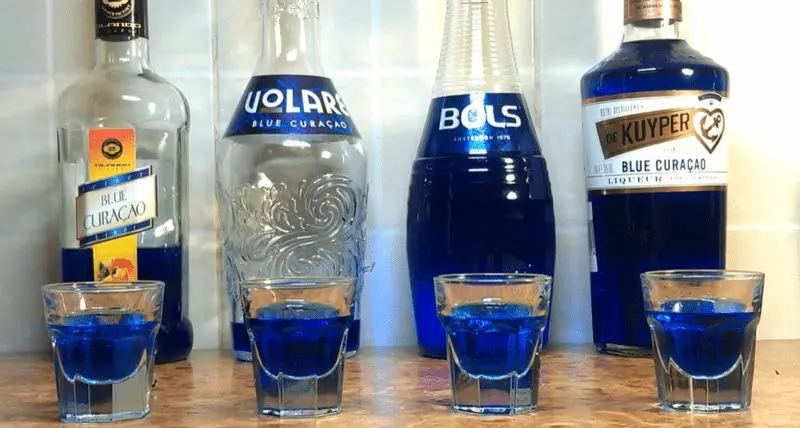
Another significant market player is Senior & Co, which started its activities directly on the island of Curacao and continues to this day. This is the only brand that has always used the peel of Laraja oranges directly for the production of Curaçao liqueurs, so it is allowed to add “genuine” on the labels of its products. Chaim Mendez Chumaqueiro and his business partner Edgar Senior began selling Curaçao liqueur in 1896 at Botika Excelsior, a small family pharmacy, and in 1947 they acquired the country estate of Chobolobo in Willemstad (the capital of the island of Curaçao), where the Senior distillery was founded. & Co. It was not until the 1960s that Kurasawa Jews began dyeing their liqueurs blue, anticipating the boom in sugary-sweet blue tiki cocktails that took place in the 1970s and 80s in the United States.
For the production of liqueurs, Curaçao Senior & Co harvests Laraja oranges while still green, then cuts them into four pieces and dries in the sun for 5 days. After that, the dried peel is placed in bags of matting, where various herbs and spices are added (this mixture is different for different manufacturers). The bags are immersed in pure sugar cane alcohol (Bols made his liquor based on wine spirit) and infused for a week with intermediate heating, cooling and dilution with water. Then the macerate is distilled on a copper apparatus, diluted to the desired strength and sweetened. In this way, a completely transparent liqueur with a bright orange-spicy aroma is obtained, known to us as Curaçao. It remains only to paint it.
Today, certified food coloring is used to color clear orange liqueur. Specifically, Blue Curacao is stained with FD&C Blue No. 1, also known as E133 (Brilliant Blue FCF). Previously, natural dyes, extracts from various plants, anthocyanins, which turn blue in an alkaline environment, were used for this. There are also old records, dated no one knows what year, that for the color of Blue Curacao they used indigo, a mineral that was dissolved in vitriol and drinks were tinted with the resulting mixture. On the market you can find Curacao and other colors: green, orange, yellow, red. Coloring does not affect the taste of the liqueur.

The technology described above is used only by Senior & Co. Other brands don’t talk much about how their Curacao is produced, because there is often nothing to be proud of there. Most of what is sold under the guise of Blue Curaçao is tinted alcohol, flavored with various extracts of oranges and spices. But you are on Romovy, which means that everything that the alcoholic beverages market can offer us, we will offer to cook at home. Cook tastier and with guaranteed quality control. It’s a sin not to try to cook Blue Curacao, especially since we have already prepared orange liqueurs and know something.
Cooking Blue Curacao at home
To color the liqueur, which in this case is the key to distinguishing this drink from many others, you can use food coloring from a candy store or try some natural ingredients. So, to color drinks blue, you can use quite common blue cornflower petals, which are often tinted with absinthe (mixed with saffron they give a green color, which was already useful to us during the preparation of green Chartreuse). Another bright and 100% natural ingredient that few people know about yet is Clitoria trifoliate petals, also known as Thai blue tea or anchan. It is easy to find in tea shops, the color gives a rich, and almost no taste. The only thing is that all natural dyes are short-lived and quickly fade in sunlight, so it is advisable to store the liquor in a darkened container or in a dark place.
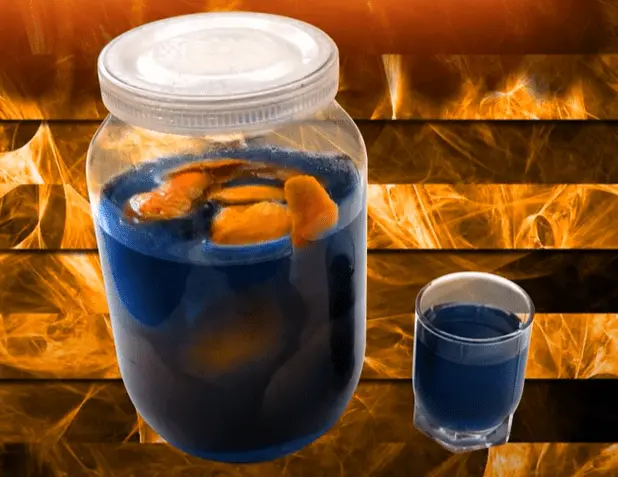
To make homemade Blue Curacao you will need:
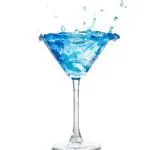
- 1 liter of vodka or alcohol 45-50%
- 1 liter gin (can be homemade)
- zest of 12 oranges
- 4 tbsp. l. dried orange peels
- 32 button Gvozdik
- 1900 g sugar
- 1500 ml of pure water
- blue food coloring*
* – to color a given amount of liquor, you need to take from 40 to 70 anchan flowers.
In a jar of suitable size, combine vodka, gin, orange zest and dried orange peels. Insist in a cool dark place for 20 days, shaking occasionally. On the 20th day, add the cloves and let stand for another day. Strain through a sieve, filter through cotton wool or coffee filters. Dissolve sugar in slightly warmed water and add to the infusion. Add dye: a few drops at a time if using confectionery dye, or 40-70 anchan flowers (better to start with less), which should be drained after the desired color has been achieved.
This recipe in practice from our friends from Dobrovar (not without experiments, which is especially pleasing):
How to drink Blue Curacao liqueur? TOP 7 cocktails with him
Curacao in its purest form is rarely, if ever, drunk. By itself, it is not drinkable, but some may like it with ice. You can add orange or pineapple juice to taste. Like all liqueurs, the drink is a digestif, that is, you need to drink it after a meal – it improves digestion. But Curaçao liqueurs are best revealed in cocktails, while Blue Curaçao fits perfectly into the concept of mixology “cocktails sometimes have to be fun.” The Blue Lagoon cocktail, named after a thermal spa in Iceland, is by far the most popular of them all. Let’s start with him.
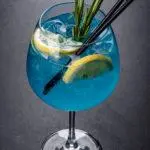
Cocktail Blue Lagoon / Blue Lagoon
- 50 ml of vodka
- 25 ml Blue Curacao
- 150 ml lemonade (Sprite or 7-up)
Build in highball with ice. Stir, decorate at your discretion with a cherry, lime, orange or pineapple.
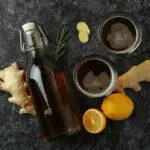
Cocktail Ginger swing / Ginger Swing
- 45 ml Blue Curacao
- ginger ale to taste
Build in a collins glass with ice. Stir and garnish with a sprig of rosemary.
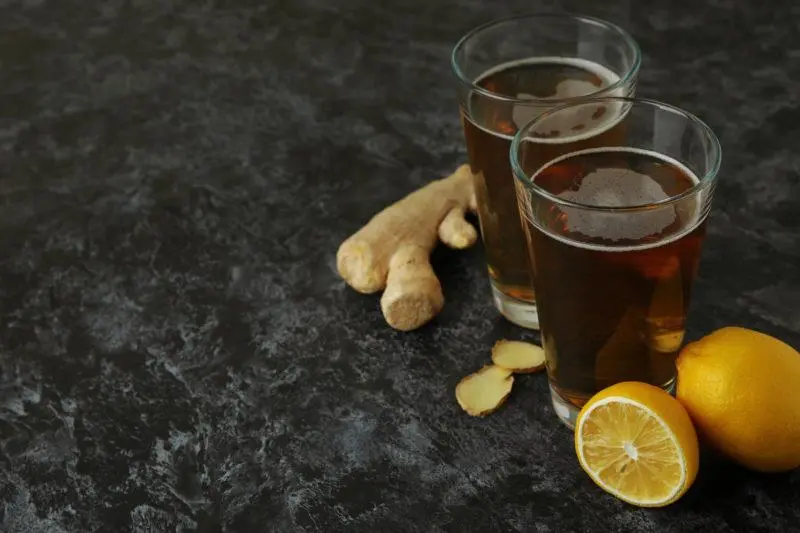

Blue Hawaiian Cocktail
- 30 ml light rum
- 30 ml Blue Curacao
- 60 ml of pineapple juice
- 30 ml coconut cream 20%
Shake in a blender with ice and strain into a hurricane glass. Garnish with a pineapple wedge.
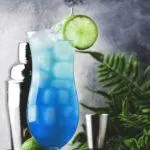
Cocktail Midnight kiss / Midnight Kiss
- 20 ml of vodka
- 150-180 ml champagne
- 10 ml Blue Curacao
On a flute glass, make a sugar crust. Pour vodka and chilled champagne to the top. Pour in Blue Curacao and stir.
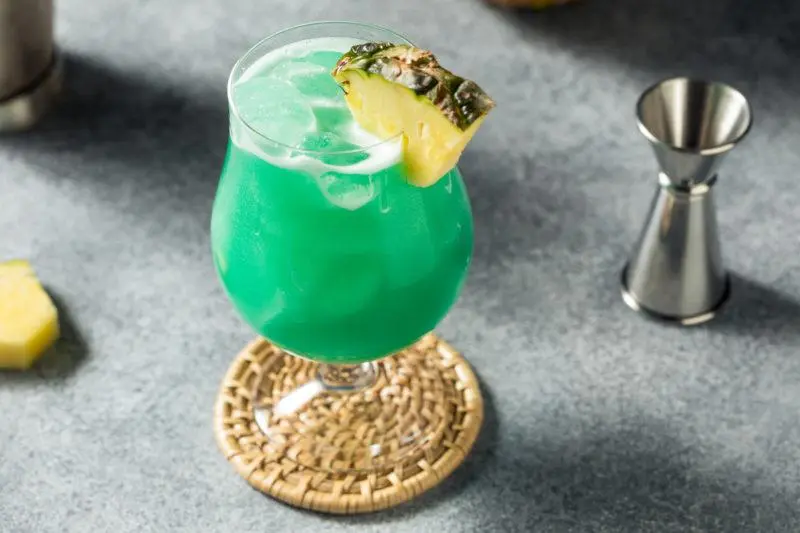
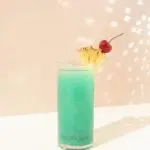
Cocktail Yanganuko / Llanganuco
- 45 ml pisco
- 15 ml Blue Curacao
- 20 ml dry vermouth
Shake with ice. Strain into a cocktail glass. Decorate with a cherry.

Cocktail Mystic Blue / Mystic Blue
- 60 ml of mescal
- 20 ml of lime juice
- 15 ml Blue Curacao
Shake in a blender with crushed ice and pour into a coupe glass. Garnish with a strip of orange zest.
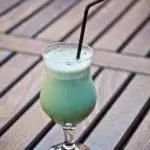
Cocktail Nickel Fever / Nickel Fever
- 15 ml Blue Curacao
- 20 ml Southern Comfort liqueur
- 20 ml Galliano liqueur
- 40 ml cream 15%
- 40 ml orange juice
Mix in a mixing glass with ice. Strain into a cocktail glass.









